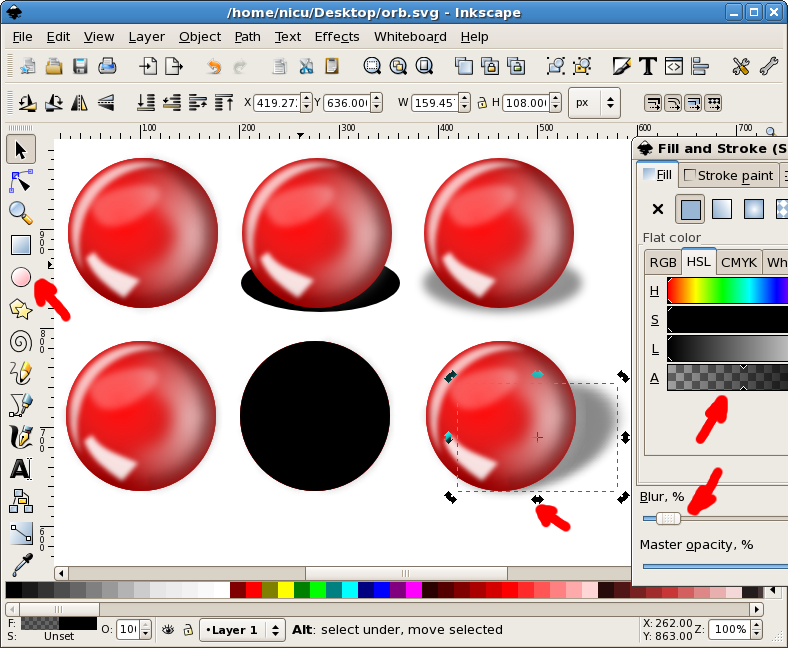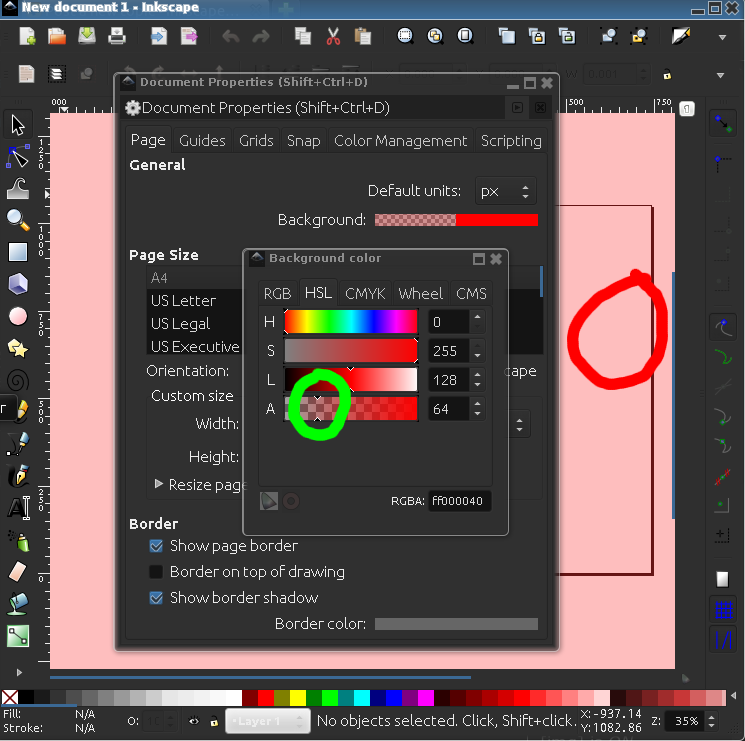
- #INKSCAPE CHANGE TEXT COLOR HOW TO#
- #INKSCAPE CHANGE TEXT COLOR FOR MAC#
- #INKSCAPE CHANGE TEXT COLOR UPDATE#
- #INKSCAPE CHANGE TEXT COLOR CODE#
- #INKSCAPE CHANGE TEXT COLOR SERIES#
#INKSCAPE CHANGE TEXT COLOR SERIES#
Want to learn more about how Inkscape works? Check out the Inkscape Master Class – a comprehensive series of over 60 videos where I go over every tool, feature and function in Inkscape and explain what it is, how it works, and why it’s useful. Still, it would be great to be able to apply these changes as the default from directly within the menu, without having to save a template. Unlike previous versions of Inkscape, the process for changing the default background color is now easier because everything is labeled better and the Document Properties menu has been overhauled to be more organized. To test it out, close Inkscape and launch it again. Inkscape will now launch with these settings in place each time. Simply input whatever name you’d like for your document and check the box at the bottom of the menu that reads “ set as default template“. Changing Text Color You can change a text’s color the same way as you change the color of any vector object in Inkscape. The templates feature in Inkscape allows you to save your document as the default document that opens each time you open Inkscape, and it can certainly be used to change the default background color in Inkscape.Ī small menu should open: Click to enlarge. Let’s say you really like these settings and want to use them regularly without having to manually input them each time you launch Inkscape.Īlthough there is no setting that directly allows you to do this, the Templates feature can be used as a workaround.
#INKSCAPE CHANGE TEXT COLOR HOW TO#
How To Make These Changes The Default Setting Next time you launch Inkscape, it will open with the same background colors as it previously did.
#INKSCAPE CHANGE TEXT COLOR CODE#
Click inside the color area to select a color, or enter a color code in the Input text box. It should be noted that these changes only apply to the document you’re currently working on. So, sometimes you may need to convert color codes. Once you are finished, simply close out of the menus. Click to enlarge.Ĭlicking on either of them will open a color picker menu where you can choose a new color: Click to enlarge. Desk: This represents the open workspace around your document. Use the selector tool to select your text V1 Inkscape Select Tool Click the red X indicating no color to remove the fill from your letters V1 Inkscape Change.Border: This represents the color of the border around the document.Change font to Bitstream charter > Font size. Page: This represents the color of the document. Point to Tool controls bar, Text formatting options are available in the Tool controls bar, too.Towards the bottom-right of the Document Properties menu you will see three boxes labeled as follows:
#INKSCAPE CHANGE TEXT COLOR FOR MAC#
It can also be accessed by pressing Control + Shift + D (or Command + Shift + D for Mac users.) Step 3: Change the Page and Desk colors using the menu interface The background color settings are located in the Document Properties menu, which can be accessed by navigating to: Step 2: Open the Document Properties menu
#INKSCAPE CHANGE TEXT COLOR UPDATE#
If you’re using an older version than that, go here to update your Inkscape installation. Make sure you are using version 1.2 or later. Somewhere on the splash screen you will see a version indicated.

Incscape does not change colour.png (15.

Now your drawing disappears and appears all white.To check which version of Inkscape you’re using, go here if you’re a Windows or Linux user: How do you change the colour of text I need to change from black to white (Times New Roman), so I went to Stroke Paint, selected flat colour, selected 255,255,255,255 (white) but as you can see there are dark areas that remain in the middle of text. Step 4: Change the background to fully transparent. Step 3: Fill all black objects with white.
:max_bytes(150000):strip_icc()/004_how-to-adjust-text-in-inkscape-1701888-8b9f715a523249ecad4e35707729e53f.jpg)
Repeat step 1 and 2 for other white objects. The inner object is deleted in the process, which is what we want here! Step 2: Select Path > Difference (or Ctrl+-). However, you may encounter the situation when you want to utilize the added. Step 1: Mark the outer outer (black) object, then shift mark the inner (white) object. After adding text, you can customize it by changing its font style, size, and color.

However, if your drawing contains white objects overlaying another object, you should as an intermediate step set the background to a special color, say pink semi-transparent, to easy the following steps.Ĭhanging the white objects color to transparent will not work, as the outer objects color will shine through (in my case black). To change the background to transparent go to File > Document Properties > Background and check the alpha channel (A). There is no easy single step procedure do do that! There is however a multi-step procedure available using InkScape.


 0 kommentar(er)
0 kommentar(er)
